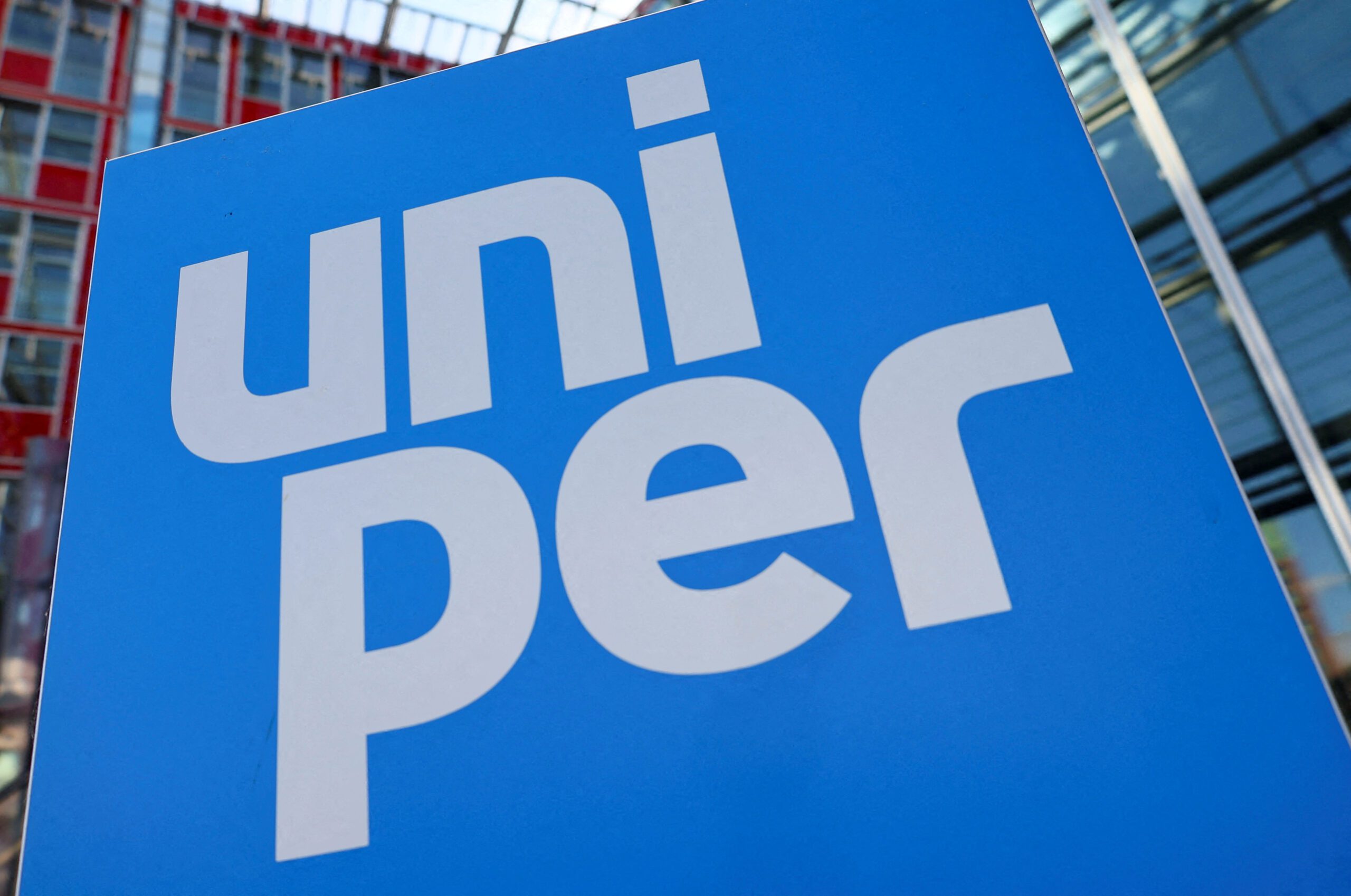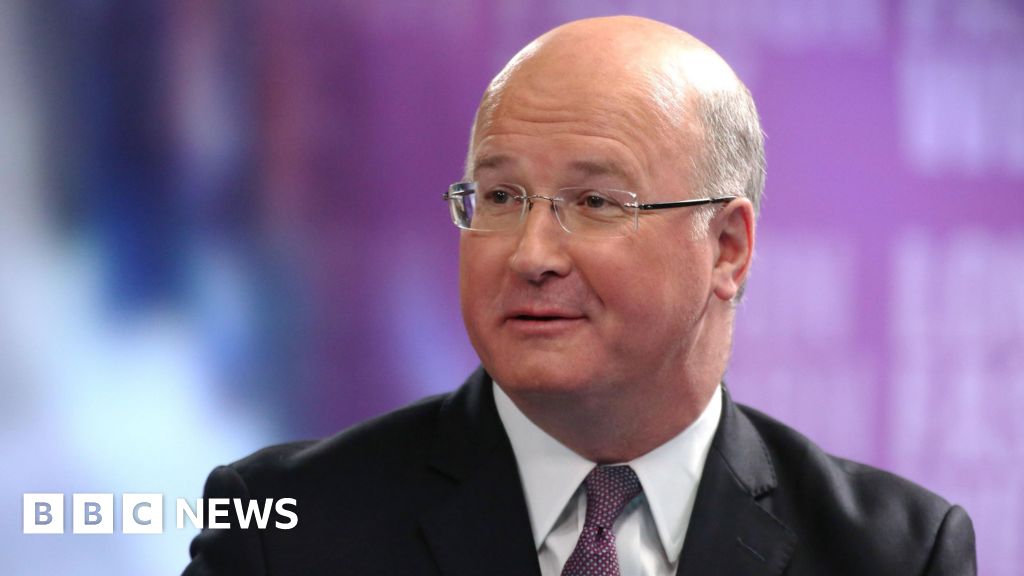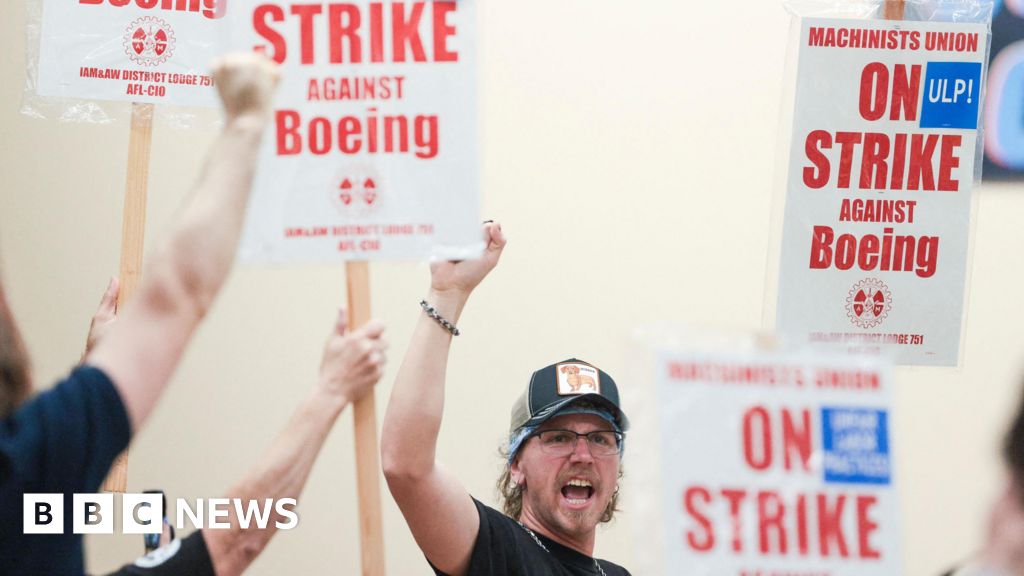Reuters exclusively reported that legacy gas contracts with former main supplier Gazprom could become a key hurdle for utility Uniper in its attempts to return to the stock exchange following its 13.5 billion euro bail-out by the German government during the height of Europe’s energy crisis.
Business
Uniper’s dormant Russian gas contracts may pose hurdle to listing

Energy
03 May 2024, 3:26 am 1 minute
Market Impact
The expected re-IPO of Uniper could become one of Germany’s biggest listings in 2025 and would mark a major milestone for Berlin following Uniper’s nationalization in 2022, making it a key strategic issue for utility investors.
Article Tags
Topics of Interest: Energy
Type: Reuters Best
Sectors: Commodities & Energy
Regions: Europe
Countries: Germany
Win Types: Exclusivity
Story Types: Exclusive / Scoop
Media Types: Text
Customer Impact: Significant National Story
Business
China’s central bank cuts rates and eases policy to boost property sector
Stay informed with free updates
Simply sign up to the Chinese economy myFT Digest — delivered directly to your inbox.
China’s central bank has cut its benchmark interest rate as part of a broad set of easing measures to boost the world’s second-largest economy as it risks missing growth targets this year.
People’s Bank of China governor Pan Gongsheng on Tuesday said the short-term seven-day reverse repo rate, the central bank’s main policy rate, would be reduced from 1.7 per cent to 1.5 per cent.
The PBoC will also cut the reserve requirement ratio, the amount lenders must keep in reserves, by 0.5 percentage points, he said, while signalling a further potential cut of 0.25 to 0.5 percentage points this year. The RRR cut would add Rmb1tn ($142bn) in liquidity to the banking system, he said.
In addition to the monetary easing, the PBoC also announced government funding to boost the stock market and aid share buybacks, as well as extra support for China’s stricken property sector.
China’s blue-chip CSI 300 index of Shanghai- and Shenzhen-listed shares rose 2.4 per cent on Tuesday. Hong Kong’s Hang Seng index rose 3.3 per cent, led higher by mainland Chinese companies listed in the territory.
Pan said the measures aimed to “support the stable growth of China’s economy” and “promote a moderate rebound in prices”.
China’s economic growth has decelerated in recent months as a prolonged slowdown in the property sector has weighed on consumer sentiment and curbed spending.
Economists have slashed their growth forecasts to less than the government’s official target of about 5 per cent for 2024 as deflationary forces have proven persistent, with producer prices declining since last year.
Policymakers have turned to exports in the hope that the housing crisis will bottom out, but robust shipments of electric vehicles, batteries and other goods have not been enough to fully offset the weaker domestic economy.
“The Chinese economy is recovering and the monetary policies introduced by our bank this time will help support the real economy, incentivise spending and investment and also provide a stable footing for the exchange rate,” Pan said.
Pan was joined by Li Yunze, director of the new financial sector watchdog, the National Financial Regulatory Administration, and Wu Qing, chair of the markets supervisor, the China Securities Regulatory Commission.
The officials said the government would boost stock market liquidity by allowing brokers, insurance companies and funds to tap central bank facilities to buy stocks. The PBoC will also provide relending facilities for shareholders to conduct buybacks.
“A fresh stimulus push is certainly positive,” said Liu Chang, macro economist at BNP Paribas Asset Management.
But with economic momentum weak heading into the fourth quarter, officials need to act “very quickly in the weeks ahead to implement additional measures if they wish to get to the 5 per cent target”.
“In this regard, we think there is still a worrying lack of urgency behind their words around stimulus,” Liu said.
In other measures, the bank lowered mortgage downpayments for second homes to 15 per cent from 25 per cent. Second properties had been subject to more onerous conditions to curb real estate speculation, previously a focus for President Xi Jinping.
The PBoC also said it would provide better terms for a destocking programme, under which the central bank made Rmb300bn available to local government-owned enterprises to help them buy up unsold inventory from property developers.
But the central bank stopped short of increasing the funds available under the programme, amid signs it was struggling to gain traction.
Economists have said reducing China’s vast stock of unsold housing is crucial to restoring confidence in the economy and reviving domestic consumption.
Business
Reuters reveals NI to explore options including sale amid interest from Emerson Electric

Business & Finance
13 January 2023, 9:11 pm 1 minute
Reuters was first to report that National Instruments Corp had received acquisition interest from Emerson Electric. A few days after the Reuters news, Emerson disclosed a nearly $7 billion hostile offer for NI, which the company had been trying to buy unsuccessfully for several months.
Article Tags
Topics of Interest: Business & Finance
Type: Reuters Best
Sectors: Business & Finance
Regions: North America
Countries: US
Win Types: Exclusivity
Story Types: Exclusive / Scoop
Media Types: Text
Customer Impact: Significant National Story
Business
Ex-Harrods boss saw ‘abhorrent’ behaviour from Fayed

Former Harrods chief executive, James McArthur, witnessed “abhorrent” behaviour from Mohamed Al Fayed, but not sexual abuse, he has told the BBC.
The late Harrods owner has been accused of sexual assault and rape by more than 20 women, who spoke to the BBC for a documentary broadcast last week.
Mr McArthur was chief executive at Harrods for ten months in 2008, a time when the Metropolitan police investigated an alleged assault on a 15-year-old girl in a Harrods boardroom.
He says he was unaware of the investigation, even though it was covered in the media at the time, which he says he doesn’t recall.
In a written statement, he told the BBC: “I was indeed CEO of Harrods for a short, and most unpleasant, 10 months during 2008 under Fayed [sic].”
“While Fayed’s behaviour was often abhorrent in many ways, and professional relationships with him were largely dysfunctional, I was not aware of any sexual abuse by him – if I had been, I would have taken action,” he said.
The “abhorrent” behaviour included Fayed’s inappropriate sense of humour, and lack of professional conduct, he said.
Ten months is a very short stint for a chief executive, and turnover of chief executives and other directors was high at Harrods under Fayed’s ownership.
Mr McArthur added: “I was also not aware of a Met Police investigation into Fayed’s conduct during 2008. Fayed would, I imagine, have tried to keep anything like that closely under his control within the secure precinct of the chairman’s office.”
The initial accusation in 2008 and the subsequent investigation were covered in a number of newspaper articles. Questioned about this, Mr McArthur said, “I do not recall that at all.”
A file was passed to the Crown Prosecution Service, who decided there wasn’t enough evidence to secure a conviction.
Mr McArthur added: “I am absolutely horrified by the details of the allegations bravely brought to light through the BBC. My heart goes out to Fayed’s victims, and I do hope very much that they will get the justice and closure that they are seeking.”
After leaving Harrods, Mr McArthur was chief executive of handbag maker Anya Hindmarch for four years, then held a number of roles including chairman of Lulu Guinness, according to his LinkedIn profile. He now lists his occupation as “investor/director/adviser”.
The BBC has contacted a number of former directors of Harrods during Al-Fayed’s ownership.
Yesterday the chief executive of the department store Selfridges, Andre Maeder, who was a director at Harrods for six years between 1996 and 2002, told the BBC he was “horrified” to learn about the alleged rapes and sexual assaults detailed in the documentary, but said he “never saw or heard anything” about this “abhorrent” behaviour.
Richard Simonin, chief executive from 2003 to 2005, declined to comment when contacted by the social networking site LinkedIn.
Harrods was bought by the gulf state of Qatar in 2010. The new owner has admitted that victims were failed, and said it would settle legal claims.
Yesterday it emerged that Harrods is investigating whether current staff were involved in any of the allegations against Fayed, who died last year aged 94.
Business
How tackling TB could help win the war on superbugs
Phumeza Tisile is a survivor with a warning for the world.
The South African healthcare activist almost died from tuberculosis in the early 2010s, after a crucial drug to treat it did not work in her case. At one point, her doctors told her to talk to a priest, as they thought she would not live.
Tisile rallied and finally rid herself of the disease in 2013, after more than three-and-half punishing years of treatment. The trauma animated her to campaign to curb the spread of medicine-resistant “superbugs”, such as the one that nearly killed her.
This week Tisile will support fellow activists lobbying a high-level UN meeting on tackling drug resistance, a global scourge that is alarming health experts, governments and the private sector. TB is central to this potentially catastrophic pharmaceutical failure, which means tackling it is crucial to averting what has been branded a “silent pandemic”.
“Imagine now we have a disease and the antibiotics don’t work because we’ve overused them,” says Tisile, who will join hybrid events surrounding the UN general assembly gathering in New York this week. “Every day we learn something new about superbugs — and the fact that things are changing in a very big way.”
The forbidding future Tisile conjures from a sunlit room at her Cape Town home is approaching all too fast. Tuberculosis is a prime example of the growing threat from antimicrobial resistance to medicines on which humanity has relied for decades.
Tedros Adhanom Ghebreyesus, the WHO’s director-general, warned last week that AMR endangered a “century of medical progress” and could turn infections treatable today into a “death sentence”.
Drug-resistant strains of TB are estimated already to account for about a third of the millions of deaths annually associated with AMR. In the World Health Organization’s Europe region, an estimated quarter of new TB patients and half of previously treated patients experience drug resistance — the highest proportion globally.
The global TB caseload has been rising since 2020, after years of gradual decline. While countries in Africa and other low and middle-income states suffer by far the most, case numbers have been rising in some rich nations. In England, they climbed last year above pre-Covid pandemic levels, according to provisional data.

The battle against TB offers essential lessons for the wider fight against superbugs and “should be recognised in its true dimension”, says Suvanand Sahu, deputy executive director of the Stop TB Partnership.
“The experience of diagnosing and treating TB could be very important when we are trying to do this for other pathogens,” says Sahu, whose coalition brings together more than 1,600 organisations from 120 countries across the public, private and non-governmental sectors. “TB should be the pathway to look at for our overall AMR response.”
TB campaigners want the world to understand that drug resistance to the disease offers a key to understanding the nature of AMR and what society needs to do combat it. Lessons learnt from TB about what to do — and what to avoid — could be critical to winning the war against superbugs.
“You need new drugs, you need combinations, you need good diagnostics — we don’t have those for AMR,” says Dame Sally Davies, the UK’s special envoy on antimicrobial resistance, of the importance of TB in this wider struggle.
“You need a good health service that can help patients get their treatments and continue their treatments — and it all needs funding.”
Antimicrobial resistance describes the way bacteria, viruses and other pathogens evolve resilience to the drugs used to treat them.
As a result, infections become harder to shift and persist for longer, increasing the risk of severe illness and death — and the chances of sufferers spreading their strain of the disease to others.
Bacterial AMR is already a global killer. It was associated with 4.71mn deaths globally in 2021 and was directly responsible for 1.14mn, according to a Lancet study published last week. It could burden the world with more than $1tn extra annual healthcare costs by 2050 and hit GDP by up to $3.4tn annually by 2030, the World Bank has estimated.
Resistance is driven by the excessive use and careless management of life-saving drugs. Overprescription, the failure to complete the full dosage course and the use of human antibiotics for livestock have all worsened it.
Climate change is a further intensifier, as higher temperatures promote bacterial growth and extreme weather events such as flooding provide conditions for resistant bugs to pass genetic material to less evolved ones.
International alarm about AMR has grown, with the private sector weighing in. A group of 80 investment institutions called this month to cut the use of antibiotics in the food chain, branding it “not just a health necessity but also an economic imperative”.
TB is integral to the AMR conundrum. It killed 1.3mn people in 2022, according to the WHO, making it the second-most deadly infectious disease after Covid-19. It is caused by a bacterium spread through the air by coughing, sneezing and spitting. It most often affects the lungs, although it can hit many other areas including the brain, kidneys and spine. Its symptoms can include fevers, chest pains and general weakness, while treatment generally lasts many months if not years. Patients often experience lasting after-effects such as lung damage and hearing loss — as well as social stigma.
The disease thrives in densely populated and deprived areas. It sometimes grows in communities where people may avoid health authorities because they are worried about their immigration status, says Lord Ara Darzi, author of a government-commissioned report published this month on Britain’s NHS.

“It’s a big city problem, it’s partly an immigration problem, partly an educational problem,” he says. “And the sad fact is, it’s partly a neglect problem by the system.”
Some of the highest rates of drug-resistant TB in the world are found in eastern Europe and central Asia, particularly former Soviet republics. The collapse of communist authorities from 1989 devastated health systems and allowed the disease to flourish, with little or no surveillance for AMR.
The impact of those chaotic times reverberates today. “They lost control, they had no logistics chains to ensure drug supplies,” recalls Oxana Rucsineanu, who suffered from drug-resistant TB in Moldova between 2007 and 2010 and still finds physical exertion tiring.
“TB was never seen as an AMR problem — and so it was somehow separated from the AMR agenda.”
TB is a potent AMR spreader in part because it is a largely concealed enemy.
About 1.8bn people — almost a quarter of the world’s population — are estimated to carry TB bacteria. These cannot be passed on if the infection remains latent, but they can if the bacteria become active and multiply to trigger the disease. When the condition does take hold, symptoms can be mild for a while, allowing time for people to pass it to others unwittingly.
There is a TB vaccine but it has significant limitations. The BCG jab, named for its inventors, Albert Calmette and Camille Guérin, and familiar to many westerners from their schooldays, is more than a century old.
While it gives a degree of protection to young children against the most severe forms of TB, some researchers argue it offers little or nothing to adolescents and adults. A further drawback is its potential to cause false positives in skin tests for TB bacteria.

Spotting strains of TB that are drug resistant often takes time, providing further opportunities for them to spread. The bacterial cultures traditionally used to incubate and identify pathogens from bodily fluids can take days or weeks to perform. The delay can be magnified in poorly funded health systems, where facilities outside urban areas may need to send samples to centralised testing hubs.
Once TB is diagnosed, treatments are complicated and generally based on a combination of several medicines. That increases the number of possible avenues for AMR to develop.
“The rapid escalation of drug-resistant TB is already compromising the efficacy of newly developed antibiotics,” says Titus Divala, head of epidemics and epidemiology at Wellcome, the international charitable foundation. “We still have significant gaps in our understanding of the burden, distribution and risk factors of drug-resistant TB, especially for new drugs, hampering our ability to develop effective strategies.”
The waning effectiveness of rifampicin, a main frontline treatment for TB, is emblematic of the wider AMR predicament. It is part of a class of antibiotics developed in the 1960s from molecules produced by a bacterium discovered in a French pine forest. The researchers named the new medicines rifamycins, in homage to the French jewellery heist film Rififi.
Rifampicin has proved a diamond of a drug for decades. Its history follows a pattern common for many core antibiotics. It exploits work already done by nature and is useful for treating a variety of conditions, including leprosy and Legionnaires’ disease.
The jeopardy now facing rifampicin echoes the fate of other drugs on which the world has long relied. In 2020, almost half a million people suffered from rifampicin-resistant TB. That inflicted an estimated extra 6.9mn disability-adjusted life years — a measure of loss of full health — on those patients.
It is a grim irony of antibiotic invention that the best way to prevent resistance developing to an effective new drug is not to use it. In 2012, the antibiotic bedaquiline became the first novel anti-TB medicine to win US regulatory approval in four decades and has since become an important drug in fighting the disease.
But barely a decade after bedaquiline’s introduction, resistance has already been observed. A study on South African patients published in The Lancet Microbe last year pointed to the dangers of prescribing bedaquiline without first surveilling for emerging AMR. “Routine drug susceptibility testing should urgently accompany scale-up of new drugs,” the researchers warned.
AMR further thrives in places plagued by institutional breakdown and natural disasters. In Pakistan, which has a high TB caseload and suffered devastating floods in 2022, drug resistance is already high in pathogens such as some that cause the waterborne disease typhoid fever.
Sania Nishtar, chief executive of Gavi, the international vaccine alliance, recalls the suffering she saw among drug-resistant TB patients when she worked as a physician in Pakistan. It has spread because of a “constellation of factors” linked to failures of rules and systems, she says. These include poor medicine quality and counterfeiting, patients failing to finish antibiotic courses, and people self-medicating by buying drugs over the counter without medical advice.
“Everything is linked, because if a country’s governance goes downhill, it impacts the rigour of its regulatory agencies, quackery starts burgeoning, substandard drugs start burgeoning,” she says. “It all compounds.”
The flipside to drug-resistant TB’s growing menace is that — as with other persistent disease threats — we are finding new ways to deal with it.
A new vaccine to finally supersede the BCG began final-stage clinical trials this year. Preliminary results suggest it is about 50 per cent effective at stopping the development of active TB disease — potentially enough to make difference.
Molecular tests for biological markers that reveal both TB and some types of drug resistance can shorten diagnosis times from days or weeks to hours. Possible new medicines and novel combinations of existing drugs are being investigated. The Global Fund to Fight AIDS, Tuberculosis and Malaria is rolling out a six-month multi-medicine treatment regimen that could be a “game changer”, says Mohammed Yassin, a senior TB adviser at the organisation.

AMR has intensified greatly since the last high-level UN meeting on it eight years ago — and the Covid pandemic has changed the psychology of global public health. While Covid initially took money, attention and medical expertise away from TB, the resonances between the two diseases sharpened people’s perceptions. Covid showed the devastating impact of an airborne disease, even if it is far more easily transmissible than TB. The pandemic underscored the central role of diagnostics, as well as vaccines and treatments, in curbing the spread of infectious conditions.
Now campaigners such as Tisile have pushed tuberculosis to prominence in the AMR agenda — and highlighted the importance of integrating efforts to tackle both. In May, a draft leaders’ declaration for this week’s UN meeting declared TB a “key component of the global challenge of antimicrobial resistance”.
Tisile likes to climb mountains both recreationally and in her campaigning since her near-death experience. She believes the fundamental significance of the drug-resistant TB threat is finally being recognised globally. “This year things are really, really changing,” she says. “The world leaders have noticed it’s becoming a problem.”
Additional reporting by Sarah Neville
Data visualisation by Clara Murray and graphic illustration by Ian Bott
Business
Reuters reveals Shells’ LNG Canada Project to Delay Shift to Renewable

Energy
17 January 2023, 6:47 pm 1 minute
Reuters exclusively reported that Shell PLC’s Canada export project team in British Columbia plans to start building its proposed second phase with natural gas-powered turbines and a switch to electricity as more renewable power becomes available. LNG Canada CEO Jason Klein told Reuters in an interview that lack of transmission infrastructure makes the whole electrification of the plant a challenge. With global demand for natural gas from sources other than Russia accelerating after its invasion of Ukraine last year, LNG Canada is weighing whether to build a second phase to double its annual capacity to 28 million tonnes by 2030.
Article Tags
Topics of Interest: Energy
Type: Reuters Best
Sectors: Business & Finance
Regions: North America
Countries: Canada
Win Types: Exclusivity
Story Types: Exclusive / Scoop
Media Types: Text
Customer Impact: Major Global Story
Business
Boeing union hits out over ‘final’ 30% pay rise offer

The union representing thousands of striking Boeing workers has hit out at what the aircraft manufacturing giant called its “best and final” pay offer, which proposed a 30% rise over four years.
The new offer also included the reinstatement of a performance bonus and improved retirement benefits.
However, the International Association of Machinists and Aerospace Workers (IAM) said the offer was not negotiated with the union and that “it was thrown at us without any discussion.”
More than 30,000 Boeing workers went on strike earlier this month after rejecting a 25% pay rise offer.
“After listening to our employees and their concerns, Boeing today presented our best and final offer,” the aircraft manufacturing giant said in a letter sent to union officials.
The proposal doubles the value of a one-off bonus for signing a new pay deal to $6,000 (£4,497).
Boeing said the offer is dependent on it being ratified by union members by midnight pacific time on Friday 27 September (7am GMT on Saturday 28 September).
But IAM said Boeing sent the new offer directly to union members and the media without telling the union’s representatives.
“This tactic is a blatant show of disrespect to you – our members – and the bargaining process,” IAM said in a post on X, formerly known as Twitter.
The union also said it would not hold a vote of its membership ahead of Boeing’s deadline.
BBC News has asked Boeing for a statement on IAM’s response to its new pay offer.
Boeing workers voted to strike on September 13 after rejecting a new contract deal, which included a 25% pay rise over four years.
The union had initially aimed for a number of improvements to workers’ packages, including a 40% pay rise.
Almost 95% of the union members – who produce planes including the 737 Max and 777 – voted to reject Boeing’s initial offer.
Of those who voted, 96% backed strike action until a new agreement could be reached.
The strike threatens to cost Boeing billions of dollars, deepening the crisis at a company already facing significant challenges.
Its impacts are already being felt across the industry and wider US economy too, as Boeing has halted shipments of most parts and taken other steps to save money.
The company has already suspended the jobs of tens of thousands of staff.
It has also said that US-based executives, managers and staff would be asked to take one week of furlough every four weeks for as long as the walkout lasts.
Government officials are now helping to mediate talks between the two sides.
-

 Womens Workouts10 hours ago
Womens Workouts10 hours ago3 Day Full Body Women’s Dumbbell Only Workout
-

 News5 days ago
News5 days agoYou’re a Hypocrite, And So Am I
-

 Sport4 days ago
Sport4 days agoJoshua vs Dubois: Chris Eubank Jr says ‘AJ’ could beat Tyson Fury and any other heavyweight in the world
-

 News2 days ago
News2 days agoOur millionaire neighbour blocks us from using public footpath & screams at us in street.. it’s like living in a WARZONE – WordupNews
-

 Technology6 days ago
Technology6 days agoWould-be reality TV contestants ‘not looking real’
-

 Science & Environment5 days ago
Science & Environment5 days agoHow to unsnarl a tangle of threads, according to physics
-

 Science & Environment5 days ago
Science & Environment5 days ago‘Running of the bulls’ festival crowds move like charged particles
-

 CryptoCurrency4 days ago
CryptoCurrency4 days agoEthereum is a 'contrarian bet' into 2025, says Bitwise exec
-

 Science & Environment5 days ago
Science & Environment5 days agoLiquid crystals could improve quantum communication devices
-

 CryptoCurrency4 days ago
CryptoCurrency4 days agoDZ Bank partners with Boerse Stuttgart for crypto trading
-
Travel1 day ago
Where Retro Glamour Meets Modern Chic in Athens, Greece
-

 Science & Environment5 days ago
Science & Environment5 days agoWhy this is a golden age for life to thrive across the universe
-

 Science & Environment5 days ago
Science & Environment5 days agoQuantum ‘supersolid’ matter stirred using magnets
-

 Science & Environment5 days ago
Science & Environment5 days agoSunlight-trapping device can generate temperatures over 1000°C
-

 Health & fitness6 days ago
Health & fitness6 days agoThe secret to a six pack – and how to keep your washboard abs in 2022
-

 CryptoCurrency4 days ago
CryptoCurrency4 days agoBitcoin miners steamrolled after electricity thefts, exchange ‘closure’ scam: Asia Express
-

 CryptoCurrency4 days ago
CryptoCurrency4 days agoCardano founder to meet Argentina president Javier Milei
-

 CryptoCurrency4 days ago
CryptoCurrency4 days agoDorsey’s ‘marketplace of algorithms’ could fix social media… so why hasn’t it?
-

 CryptoCurrency4 days ago
CryptoCurrency4 days agoLow users, sex predators kill Korean metaverses, 3AC sues Terra: Asia Express
-

 CryptoCurrency4 days ago
CryptoCurrency4 days agoBitcoin bulls target $64K BTC price hurdle as US stocks eye new record
-

 News5 days ago
News5 days agoIsrael strikes Lebanese targets as Hizbollah chief warns of ‘red lines’ crossed
-

 Science & Environment5 days ago
Science & Environment5 days agoHyperelastic gel is one of the stretchiest materials known to science
-

 Science & Environment5 days ago
Science & Environment5 days agoMaxwell’s demon charges quantum batteries inside of a quantum computer
-

 Science & Environment5 days ago
Science & Environment5 days agoQuantum forces used to automatically assemble tiny device
-

 News4 days ago
News4 days agoBrian Tyree Henry on voicing young Megatron, his love for villain roles
-

 Science & Environment5 days ago
Science & Environment5 days agoITER: Is the world’s biggest fusion experiment dead after new delay to 2035?
-

 Science & Environment5 days ago
Science & Environment5 days agoHow to wrap your mind around the real multiverse
-

 Science & Environment5 days ago
Science & Environment5 days agoPhysicists are grappling with their own reproducibility crisis
-

 Science & Environment5 days ago
Science & Environment5 days agoNuclear fusion experiment overcomes two key operating hurdles
-

 CryptoCurrency4 days ago
CryptoCurrency4 days agoRedStone integrates first oracle price feeds on TON blockchain
-

 CryptoCurrency4 days ago
CryptoCurrency4 days agoSEC asks court for four months to produce documents for Coinbase
-

 CryptoCurrency4 days ago
CryptoCurrency4 days agoVitalik tells Ethereum L2s ‘Stage 1 or GTFO’ — Who makes the cut?
-

 CryptoCurrency4 days ago
CryptoCurrency4 days agoBlockdaemon mulls 2026 IPO: Report
-

 Womens Workouts3 days ago
Womens Workouts3 days agoBest Exercises if You Want to Build a Great Physique
-

 Womens Workouts3 days ago
Womens Workouts3 days agoEverything a Beginner Needs to Know About Squatting
-

 Science & Environment2 days ago
Science & Environment2 days agoMeet the world's first female male model | 7.30
-

 Sport4 days ago
Sport4 days agoUFC Edmonton fight card revealed, including Brandon Moreno vs. Amir Albazi headliner
-

 Technology4 days ago
Technology4 days agoiPhone 15 Pro Max Camera Review: Depth and Reach
-

 Science & Environment5 days ago
Science & Environment5 days agoHow one theory ties together everything we know about the universe
-

 Science & Environment5 days ago
Science & Environment5 days agoLaser helps turn an electron into a coil of mass and charge
-

 Science & Environment5 days ago
Science & Environment5 days agoQuantum time travel: The experiment to ‘send a particle into the past’
-

 CryptoCurrency4 days ago
CryptoCurrency4 days ago2 auditors miss $27M Penpie flaw, Pythia’s ‘claim rewards’ bug: Crypto-Sec
-

 CryptoCurrency4 days ago
CryptoCurrency4 days agoJourneys: Robby Yung on Animoca’s Web3 investments, TON and the Mocaverse
-

 CryptoCurrency4 days ago
CryptoCurrency4 days ago$12.1M fraud suspect with ‘new face’ arrested, crypto scam boiler rooms busted: Asia Express
-

 Science & Environment5 days ago
Science & Environment5 days agoFuture of fusion: How the UK’s JET reactor paved the way for ITER
-

 CryptoCurrency4 days ago
CryptoCurrency4 days agoCertiK Ventures discloses $45M investment plan to boost Web3
-

 CryptoCurrency4 days ago
CryptoCurrency4 days agoVonMises bought 60 CryptoPunks in a month before the price spiked: NFT Collector
-

 CryptoCurrency4 days ago
CryptoCurrency4 days ago‘Silly’ to shade Ethereum, the ‘Microsoft of blockchains’ — Bitwise exec
-

 CryptoCurrency4 days ago
CryptoCurrency4 days ago‘No matter how bad it gets, there’s a lot going on with NFTs’: 24 Hours of Art, NFT Creator
-
Business4 days ago
How Labour donor’s largesse tarnished government’s squeaky clean image
-

 News4 days ago
News4 days agoBrian Tyree Henry on voicing young Megatron, his love for villain roles
-

 CryptoCurrency4 days ago
CryptoCurrency4 days agoCoinbase’s cbBTC surges to third-largest wrapped BTC token in just one week
-

 News3 days ago
News3 days agoBangladesh Holds the World Accountable to Secure Climate Justice
-

 News5 days ago
News5 days agoChurch same-sex split affecting bishop appointments
-

 Politics6 days ago
Politics6 days agoTrump says he will meet with Indian Prime Minister Narendra Modi next week
-

 Technology5 days ago
Technology5 days agoFivetran targets data security by adding Hybrid Deployment
-

 Science & Environment5 days ago
Science & Environment5 days agoA new kind of experiment at the Large Hadron Collider could unravel quantum reality
-

 Politics4 days ago
Politics4 days agoLabour MP urges UK government to nationalise Grangemouth refinery
-

 Science & Environment6 days ago
Science & Environment6 days agoTime travel sci-fi novel is a rip-roaringly good thought experiment
-

 CryptoCurrency4 days ago
CryptoCurrency4 days agoHelp! My parents are addicted to Pi Network crypto tapper
-

 CryptoCurrency4 days ago
CryptoCurrency4 days agoCrypto scammers orchestrate massive hack on X but barely made $8K
-

 Science & Environment5 days ago
Science & Environment5 days agoWhy we need to invoke philosophy to judge bizarre concepts in science
-

 Science & Environment5 days ago
Science & Environment5 days agoHow do you recycle a nuclear fusion reactor? We’re about to find out
-

 CryptoCurrency4 days ago
CryptoCurrency4 days agoSEC sues ‘fake’ crypto exchanges in first action on pig butchering scams
-

 CryptoCurrency4 days ago
CryptoCurrency4 days agoElon Musk is worth 100K followers: Yat Siu, X Hall of Flame
-

 CryptoCurrency4 days ago
CryptoCurrency4 days agoBitcoin price hits $62.6K as Fed 'crisis' move sparks US stocks warning
-

 CryptoCurrency4 days ago
CryptoCurrency4 days agoCZ and Binance face new lawsuit, RFK Jr suspends campaign, and more: Hodler’s Digest Aug. 18 – 24
-

 CryptoCurrency4 days ago
CryptoCurrency4 days agoTelegram bot Banana Gun’s users drained of over $1.9M
-

 CryptoCurrency4 days ago
CryptoCurrency4 days agoEthereum falls to new 42-month low vs. Bitcoin — Bottom or more pain ahead?
-

 CryptoCurrency4 days ago
CryptoCurrency4 days agoETH falls 6% amid Trump assassination attempt, looming rate cuts, ‘FUD’ wave
-
Politics4 days ago
‘Appalling’ rows over Sue Gray must stop, senior ministers say | Sue Gray
-

 CryptoCurrency4 days ago
CryptoCurrency4 days agoBitcoin options markets reduce risk hedges — Are new range highs in sight?
-

 Money4 days ago
Money4 days agoBritain’s ultra-wealthy exit ahead of proposed non-dom tax changes
-

 Womens Workouts3 days ago
Womens Workouts3 days agoHow Heat Affects Your Body During Exercise
-

 Womens Workouts3 days ago
Womens Workouts3 days agoKeep Your Goals on Track This Season
-

 Womens Workouts3 days ago
Womens Workouts3 days agoWhich Squat Load Position is Right For You?
-

 News2 days ago
News2 days agoWhy Is Everyone Excited About These Smart Insoles?
-

 News1 day ago
News1 day agoFour dead & 18 injured in horror mass shooting with victims ‘caught in crossfire’ as cops hunt multiple gunmen
-

 Womens Workouts9 hours ago
Womens Workouts9 hours ago3 Day Full Body Toning Workout for Women
-

 News5 days ago
News5 days agoPolice chief says Daniel Greenwood 'used rank to pursue junior officer'
-

 Money5 days ago
Money5 days agoWhat estate agents get up to in your home – and how they’re being caught
-

 Technology7 days ago
Technology7 days ago‘The dark web in your pocket’
-

 Business7 days ago
Business7 days agoGuardian in talks to sell world’s oldest Sunday paper
-

 Science & Environment5 days ago
Science & Environment5 days agoHow to wrap your head around the most mind-bending theories of reality
-

 Technology6 days ago
Technology6 days agoCan technology fix the ‘broken’ concert ticketing system?
-

 Fashion Models4 days ago
Fashion Models4 days ago“Playmate of the Year” magazine covers of Playboy from 1971–1980
-

 News1 week ago
News1 week agoDid the Pandemic Break Our Brains?
-

 Fashion Models4 days ago
Fashion Models4 days agoAchtung Magazine
-

 Politics6 days ago
Politics6 days agoTrump Media breached ARC Global share agreement, judge rules
-

 Fashion Models4 days ago
Fashion Models4 days agoMixte
-

 Science & Environment5 days ago
Science & Environment5 days agoHow Peter Higgs revealed the forces that hold the universe together
-

 News5 days ago
News5 days ago▶️ Media Bias: How They Spin Attack on Hezbollah and Ignore the Reality
-

 Science & Environment5 days ago
Science & Environment5 days agoTake a look behind the scenes at the world’s largest fusion experiment
-

 News5 days ago
News5 days agoRoad rage suspects in custody after gunshots, drivers ramming vehicles near Boise
-

 Health & fitness6 days ago
Health & fitness6 days agoWhen Britons need GoFundMe to pay for surgery, it’s clear the NHS backlog is a political time bomb
-

 Health & fitness6 days ago
Health & fitness6 days agoAnxiety robbed me of my sleep – and by 32, my life was a car crash
-

 Science & Environment6 days ago
Science & Environment6 days agoNerve fibres in the brain could generate quantum entanglement
-
Business7 days ago
Glasgow to host scaled-back Commonwealth Games in 2026
-

 Science & Environment5 days ago
Science & Environment5 days agoX-ray laser fires most powerful pulse ever recorded
-

 Politics6 days ago
Politics6 days agoLib Dems aim to turn election success into influence




You must be logged in to post a comment Login